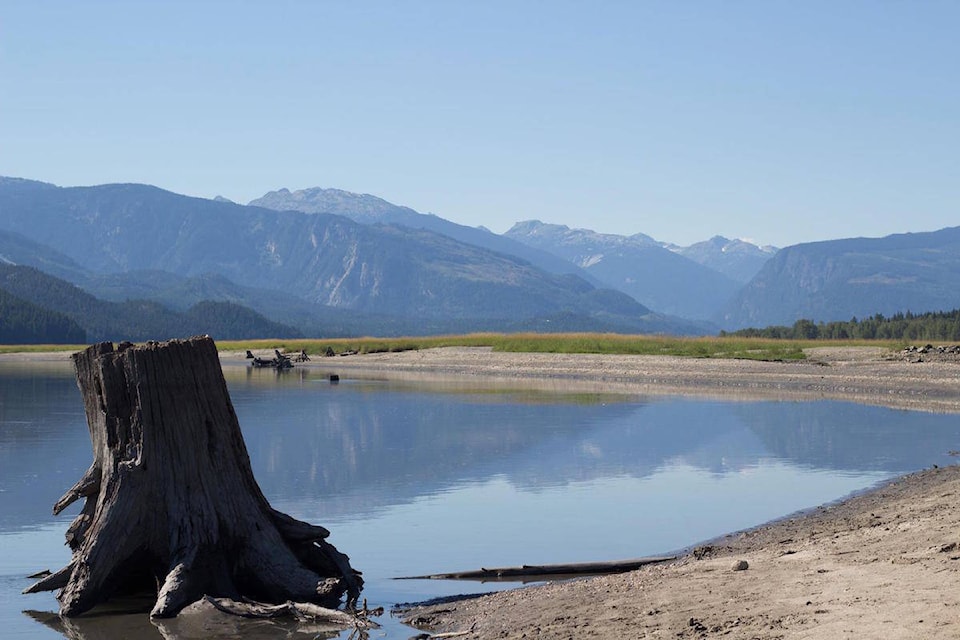More than 50 years have passed since B.C. premier W.A.C. Bennett stood reverent beside U.S. president Lyndon Johnson and prime minister Lester B. Pearson at the Peace Arch outside Blaine, Washington, where a treaty was ratified that forever changed the course of the Columbia River.
Now, the fate of the 2,000- kilometre Columbia River, considered among the most controlled in the world, is once again hanging in the balance.
On April 25 the first steps toward the renegotiation of the Columbia River Treaty (CRT) were taken when the U.S. State Department hosted a public forum on the subject in Spokane, Wash., which sits on one of the Columbia’s tributaries, about two hours south of the Canadian border.
The open house was part of the Lake Roosevelt Forum, a two-day annual gathering meant to establish ongoing dialogue between stakeholders across the Columbia River Basin.
The CRT dictates the flood control levels of numerous reservoirs and the hydroelectric operations of 14 dams along the river, which account for almost half of the U.S.’s hydro electric power generation, according to a U.S. State Department spokesperson. Three of those hydroelectric dams, at Mica Creek, Revelstoke and Castlegar, are in Canada.
While only about 15 per cent of the Columbia River’s watershed is located north of the border, that area contributes to about 35 per cent of the river’s flow.
During drought years Canada releases water stored in reservoirs north of the border to keep U.S. turbines spinning. The reservoirs also function to mitigate flood events.
During the talks at the annual forum on April 24, Jay Johnson, a policy analyst for the Okanagan Nation Alliance, called the river “an industrial bathtub,” saying its levels are dictated by American energy interests.
“The river in Canada is no longer a river,” he said. “It’s an industrial bathtub that floats up and down depending on the needs of generators in the U.S.”
Formal efforts to modernize and update the CRT were expected to begin in early 2018, the state department had announced last year. But almost halfway into 2018, that process has yet to start.
Franciso Palmieri, an acting assistant secretary for the U.S. State Department, said on April 24 he is hopeful they will start soon, calling the CRT, “a bilateral treaty signed with the U.S.’s closest ally.”
The next day, the province of B.C. announced formal negotiations are expected to begin “this spring or summer.”
Also announced was a series of community meetings on the Columbia River to take place this June in Revelstoke, Golden, Nakusp, Valemount, Nelson, Castlegar, Creston and Jaffray, a step in the effort to work closely with civic governments and First Nations to prepare for the upcoming negotiations.
Among the subjects up for renegotiation are “the downstream benefits,” or Canadian Entitlements, which see B.C. paid for operating storage dams and reservoirs that benefit hydro generation downstream.
Those payments see the U.S. send about $250 million worth of electricity to Canada each year.
Some U.S. officials have called that payment “excessive.” Others say the flood protection provided by Canadian reservoirs is priceless.
Outside of economic security interests, First Nations in partnership with ecologists are pushing the negotiators to take into account the river’s ecosystem functions and work on salmon restoration.
One estimate pegs fishery losses at Revelstoke at 500,000 salmon a year.
In the province’s negotiating principles developed during a 2012-13 public consultation process, the province said ecosystem values will be an important consideration in the planning of the implementation of the renegotiated treaty.
It also said salmon migration was not currently a “treaty issue,” saying restoration of fish passage and habitat falls under federal jurisdiction.
According to the province, more than 110,000 hectares (270K acres) of agricultural land and forest in British Columbia were flooded following the establishment of the CRT, and more than 2,000 residents were displaced, among them Indigenous communities whose traditional territory and burial grounds were flooded.
There are over 400 dams in the Columbia Basin, which spans the Continental Divide and seven U.S. States.
The treaty was signed in 1961, ratified in 1964 and is set to expire in 2024.
@Jnsherman
jake.sherman@revelstokereview.com
Like us on Facebook and follow us on Twitter
